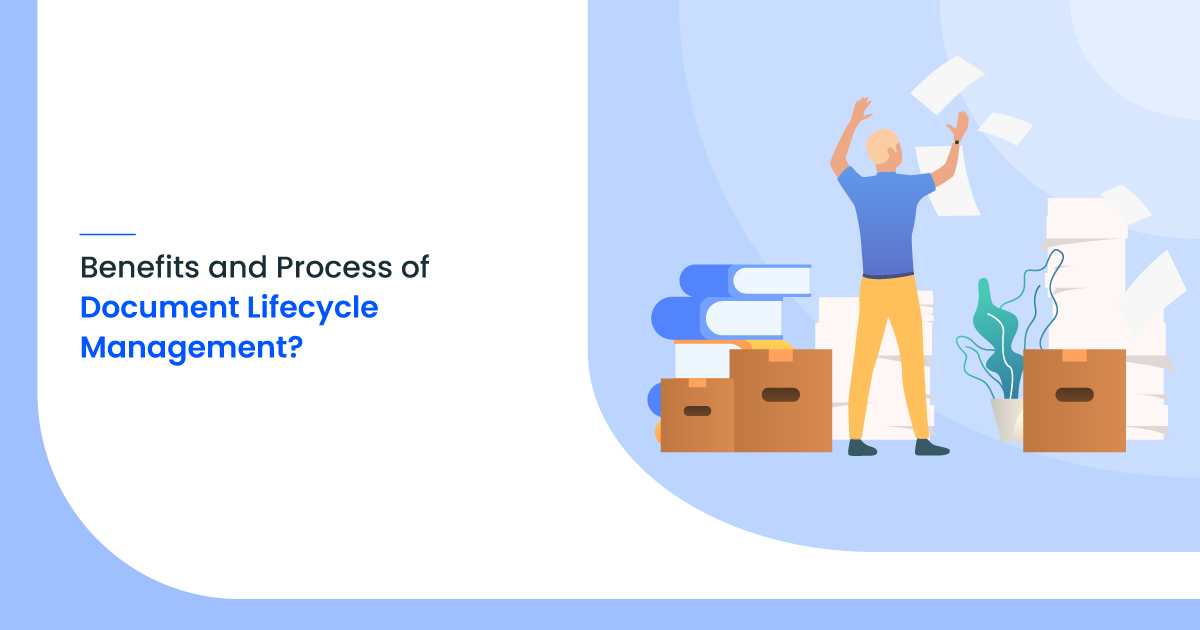Modern businesses have become dependent on information technology. In this context, a document is not merely a written piece of thoughtful text. It is a text file containing strategy, IP (intellectual property) content, financial data, or even images of importance. There is also a well-defined document lifecycle from creation to preservation or destruction. Consequently, the employee has to manage the document throughout the lifecycle diligently.
Experts say that companies spend 30-50% of their time searching for documents. They attribute the loss of time to gaps in front and back-office operations. Inexpensive software and scanning technologies can help with cost and time reduction. Let us look at the benefits and management process in greater detail.
Benefits Of Document Lifecycle Management
1. Reduced Costs
Documents get captured as hard copies or electronic documents in-house servers or the web. Cloud and SaaS platforms are also available for document lifecycle management. Sophisticated software helps to route the tasks to the most economical devices. The system identifies the right kind of equipment to deliver low-cost services. Expenses can be realistic and affordable due to superior content management systems.
2. Integrated Technology
Managing documents involves capturing, indexing, and extracting information. For high volume data, integrated technologies and enterprise solutions are available. They not only automate the whole process but also make documents more secure. They also ensure robustness, transparency, and efficient record maintenance. The best solutions are also available tailored to satisfy specific business requirements.
3. Full Document Control
Businesses want secure documentation with convenient access. Sophisticated software tools can achieve this goal in the document lifecycle process. They implement access control mechanisms and simple tracking methods. Hardware refinements assure secure, controlled access, along with mobile printing options. Tasks like printing, scanning, copying, and faxing can also get monitored for higher security.
4. Increase Efficiency and Productivity
The efficiency of enterprise-level content improves due to records management. Audit trails will ensure fiscal responsibility and transparency. Reliable document management software is also vital in satisfying regulatory needs and compliance. Automated digital processes increase operational speed without loss in quality or accuracy. They enhance business productivity as manual effort does not get wasted in routine activities. The staff can focus on productivity and deliver exceptional outcomes very soon.
Document Lifecycle Management Process
Business understanding is essential for effective document lifecycle management. The professionals have to know a company’s needs and fathom its document workflows. Only then it is possible to succeed in designing a simple or integrated solution.
1. Creation
The document lifecycle begins with the creation of hard copies or digital files. The experts choose the right form and format of electronic or analog records. They create files, databases, and other documents to generate computer-friendly records.
2. Data Capturing
Data capturing is an adjunct to the creation process for achieving full digitalization. Paper records, physical or analog documents are the input in this process. Users convert them into suitable digital formats using appropriate technology. Do you know that 7.5% of paper-based documents get lost every year? Thus, it is essential to convert them into digital copies. The conversion and capture are possible using techniques like OCR (optical character recognition), OMR (optical mark recognition), ICR (intelligent character recognition), and scanning. If records are already in the digital format, then skip this step.
3. Index
Digital formats are better than analog/paper storage. Experts choose this option because of operational efficiency. They can subject the documents to the indexing process for easy searching and retrieval. In the document lifecycle management, accurate indexing is one of the significant stages.
In this step, the user prepares the document for identification through cataloging. Special information or specific tags indicate each file. This description of the data is the metadata. The indexed information gets incorporated into the management system through programming.
Indexing is essential for quick and trouble-free retrieval of key documents. The authorized users can access the required data from anywhere, anytime. The index terms and symbols summarize the content. They are easy to locate as the document’s subject is in clear, unambiguous terms.
4. Store Properly
The well-indexed digital files will get stored in a proper location. The user can choose to store in data warehouses, archives, and other storage systems. The choice depends on business needs, storage capacity, ease of access, and security. Proper storage processes also factor in backup, file sharing, and syncing operations. Companies rely on in-house storage, web, or cloud storage.
5. Access
Retrieving data is one of the essential steps in a document lifecycle. Businesses generally set-up authorized access mechanisms. After checking the user’s credentials, the system gives access to stored data. Search engines and data mining tools can help to retrieve relevant data. Professional users conduct accurate and rapid searches using words, phrases, and metadata.
6. Take Backup
Experts recommend securing the documents through regular backup operations. Record and media management tools are best for this purpose. The backup frequency changes based on document relevance, users’ demand, and needs. Storing copies may seem redundant, but it is crucial for ensuring business continuity.
7.Manage
This step is the cornerstone of a successful document lifecycle management process. The data retrieved by users can get modified. So, the process of administering various versions has to be accurate and prompt. Successful management involves the elimination of previous versions. Only the latest versions get stored for ready access and further modifications.
Communication technologies facilitate instant team collaboration. Multiple employees can work on the same set of documents simultaneously. They can also share specific documents with their team members. Tools and techniques like email, SMS, voice call, video conferencing, dashboards, etc. help carry out this fundamental process.
9. Retain
In a document lifecycle, older versions get archived as per the company’s requirements. Tools like data migration, data warehousing are useful to store old documents. One can retain old documents for specific periods using digital records management and automated format transformation systems.
10. Destroy
It is important to destroy irrelevant data using manual and automated processes. Paper documents get shredded and disposed of after the expiry date. Confidential files and digital data get destroyed without a trace. The hard drives, servers, disks, and Cloud records get overwritten, formatted, and completely erased as per compliance and safety standards.
11. Preservation
The document lifecycle management process ends with preservation. Valuable, in-demand documents get preserved for posterity. Standardized techniques and portable document formats help in long-lasting storage and retrieval.
Need Any Technology Assistance? Call Pursho @ 0731-6725516




